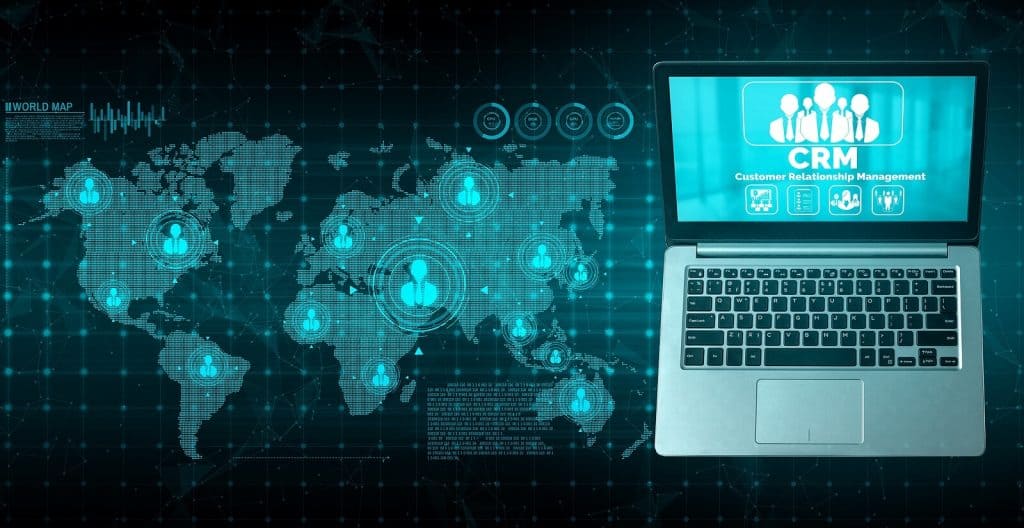What types of CRM systems are there? If sales, marketing, or service provision are part of your brand’s portfolio, you need some mechanisms for monitoring and managing all aspects of the interaction between your organization and your existing or potential consumers. This is where Customer Relationship Management or CRM comes into the picture.
Table of Contents
ToggleThere are different types of CRM software on the market, enabling you to store and manage information relating to your customers. This could include transaction histories, demographic data, contact information, opportunities for sales, open queries or support tickets, and other issues charting the course of your consumers as they progress along the sales journey.
Most CRM platforms will incorporate a database as their foundation and provide tools for marketing and sales, with a dashboard for overseeing the system and tracking performance metrics. However, not all CRM systems are the same.
The types of CRM you’re likely to encounter may be classified into three main categories.
1. Types of CRM – Operational CRM Systems
This class of CRM software focuses on facilitating all the operations relating to your consumers — most especially in the areas of marketing, sales, and service. The primary function of an operational CRM is to generate leads then convert them into contacts, and these systems are ideal for organizations that run a linear sales process focusing on new business and have a preference for automating their sales and marketing tasks. Businesses with a heavy focus on the consumer also benefit from operational CRM.
An operational CRM will typically provide tools for distributing leads to sales reps and lead scoring tools to provide them with an overview of which leads are most worthy of pursuing. In addition, sales automation tools will automatically create data records for each new contact. The system will include a content repository for the storage and calling up of commonly used documents such as proposals. Automation will also extend to routine sales tasks such as generating reports and scheduling meetings.
Operational CRM systems offer contact management tools covering meetings, phone calls, and email on the marketing side. Marketing automation tools are often available for helping teams to identify and generate new leads, nurture existing ones, and retain existing customers. Systems with event-based marketing automation enable organizations to run complex email campaigns, with set responses triggered by each new event in the brand’s interaction with leads or customers.
An operational CRM also helps businesses in automating their customer service. At one level, this can be through automated call management and service monitoring based on Key Performance Indicators or KPIs. At another, an operational CRM provides self-service options for consumers, such as automatic online payment mechanisms or smartphone-based appointment scheduling.
2. Types of CRM – Analytical CRM
The second of the three main types of CRM software is the analytical CRM. As its name suggests, data gathering and analysis are central to the workings of this class of software. The system makes data acquired from different avenues available to sales and customer service teams, using structural analysis of this information to provide insights into how an organization can improve its sales performance and service delivery and more effectively track and manage campaigns.
A data warehouse sits at the heart of an analytical CRM, acting as a central repository for information gathered from various sources. It also serves as an information access point for every department concerned with interactions with consumers.
The analytical CRM uses data mining techniques to make sense of all this information and initiates turning raw data into actionable business insights. The system uses data classification, association, and anomaly detection, to identify patterns and trends.
An analytical CRM may also use Online Analytical Processing or OLAP to implement various complex processes, including predictive analytics. This allows organizations to run alternate scenarios to predict future demand and outcomes. For this reason, this class of CRM is beneficial to organizations with access to a lot of historical data and those looking to make data-driven decisions for the business and to gain a deeper understanding of their customers.
3. Types of CRM – Collaborative CRM
A collaborative CRM serves as a platform for sharing customer information between business departments such as customer service, sales, marketing, and technical support. Its focus is on improving the efficiency and depth of communication and collaboration between teams.
By enabling more effective information sharing and collaboration between various departments, it’s possible, for example, to empower marketing personnel to better connect with specific consumers based on feedback from customer service or technical support. At the heart of collaborative CRM or CCRM is enhancing the customer experience, fostering customer loyalty, and increasing sales levels. You’ll hear some analysts refer to CCRM as strategic CRM.
Channel management and interaction management are central to the operation of a collaborative CRM system.
Channel management tools make it easier for organizations to engage with their consumers at every touchpoint they use to interact with a brand — be it email, social media, phone, or online portal. For larger organizations that need to juggle intricate networks of vendors, partners, or suppliers, tools may also be available for managing this ecosystem via a partner relationship management (PRM) solution.
The interaction management features of collaborative CRM enable users to gain a 360-degree view of the consumer by logging every touchpoint and interaction that a customer has with the brand. This allows marketing and sales personnel to map each individual buyer’s journey and identify where and how to make improvements to their experience. Interaction management tools can enable users to map customer behaviors, group contacts according to various criteria, and filter the results.
A collaborative CRM platform may also offer features to enhance the organization’s internal communications. These might include video conferencing tools, project management workgroups, activity streams, and integration with document sharing services like Google Drive or Dropbox and popular collaboration platforms like Slack or Trello.
For these reasons, collaborative CRM software is especially useful to organizations that rely heavily on cross and inter-departmental communications, those that need to monitor consumers across multiple channels, or businesses looking to gain a deeper understanding of their customers to improve retention levels or increase loyalty.
Two Sub-Classes of CRM Software
While most analysts group CRM software into the three categories outlined above, some include two types of CRM systems as sub-classes of the genre — and some consider them as major CRM categories in their own right.
1. Campaign Management CRM
If the goal of your organization is to use contact information for the planning, management, and analysis of better campaigns, the solution you choose may be classified as a campaign management CRM.
These platforms enable users to harness collected customer data and insights from data analysis in running marketing or sales campaigns. Because of this, you’ll often hear campaign management CRM described either as analytical or operational.
Popular tools in this category feature integration with different email campaign providers, such as Outreach or Mailchimp. Organizations can use the CRM platform as the medium for running a campaign, and use the email integration software for wider distribution.
2. Strategic CRM
Strategic CRM systems have a consumer-centric focus and are considered by some to be part of the collaborative CRM ecosystem. With a strategic CRM, the goal is to gather information about customers and the interactions between them and your brand, with the intent to improve your relationships with them.
To this end, a strategic CRM will provide analytical insights in the here and now. Its analytics engine will also make adjustments to the way you interact with consumers as time progresses and the system learns. This is the type of CRM solution you need if the focus of your company is on building long-term relationships rather than running short campaigns or making quick gains.
Types of CRM – Making The Right Choice
As we’ve seen, different types of CRM do different things particularly well or put their focus on different aspects of the brand-customer interaction. Individual products may also offer additional modules to increase or expand their functionality — so an operational CRM may provide optional extras to make it more analytical or strategic, for example.
In selecting a CRM system, you should make a choice based on the circumstances and identity of your brand and your specific needs. You should first assess these needs by making a checklist of your specific requirements, also bearing in mind any characteristic demands for CRM in your particular industry or niche.
Exercise some due diligence, and compare the different products on offer. Once you’ve settled on a shortlist of possibilities, question each vendor extensively — and request a demo if there’s one available.




